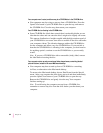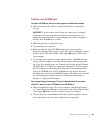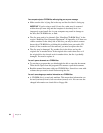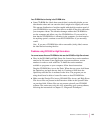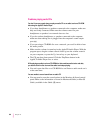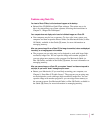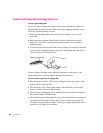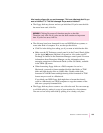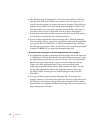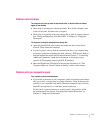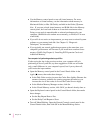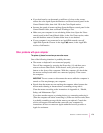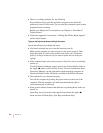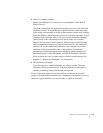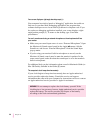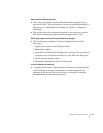
m The disk drive may be damaged. To see if this is the problem, click No to
eject the disk; then insert the disk into another drive, if you have one. If
you still see the message, the floppy disk may be damaged. If the disk icon
appears on the desktop, one of the drives may be damaged. (When a disk
that was written on by one drive cannot be read by another, the heads on
one of the drives are out of alignment. The drive that is misaligned or
broken may not be the drive that cannot read the disk; try the disk in three
or four drives to identify the drive with the problem.)
m If none of these suggestions works, the floppy disk is probably damaged.
First use a disk recovery program to copy the data from your damaged disk
onto a good disk. For instructions, see the documentation that came with
the disk recovery program. Then, use Disk First Aid (located on the system
software CD-ROM disc) to repair the damaged floppy disk.
The computer keeps asking you to reinsert a floppy disk after you’ve ejected it.
m An application program or document from the floppy disk is still open and
is “looking for” the disk. Reinsert the disk and close the documents or quit
the application programs that are open on the disk. (Go to the Application
menu in the upper-right corner of your screen and make sure that the
Finder is the only application listed. If not, select one of the other
application programs and then choose Quit from the File menu. Do this
for any other applications listed in the Application menu.) Then eject
the floppy disk by selecting its icon and choosing Put Away from the
File menu.
m You may not have properly ejected the floppy disk. To eject the disk
properly, reinsert it, select the floppy disk icon, and choose Put Away from
the File menu. If you eject a floppy disk by choosing Eject Disk from the
Special menu, the computer remembers the floppy disk in its memory and
keeps asking you to reinsert it.
170
Chapter 10



